ESA MIRACLES, powered by Solenix
07 October 2022
End of June, the series of ESA’s METERON (Multi-purpose End-To-End Robotics Operations Network) experiments had its successful grand finale with ANALOG-1.
More than 10 years ago, METERON started as a research activity among the ESA directorates HRE, TEC and OPS with the aim to prepare ESA for future lunar human and robotic exploration missions. Over the years, METERON has developed an international framework to test and validate end-to-end communications and robotic control strategies and to evaluate operational considerations. This includes identifying tasks that are best performed by humans, tasks that can be executed autonomously by the robotic systems, and studying what data is needed to support the monitoring and control of robotic assets. Further areas of interest included the cooperation and handovers between the operations teams, safe and efficient ways of operating the robotic assets, and handling challenges like delays and outages of the communication links.
From the very beginning, Solenix staff have been heavily involved in METERON and have formed the fundament of several METERON experiments, supporting ESOC from the ground segment and systems and operations side. Solenix colleagues were tasked with defining the experiment scenarios and objectives, implementing mission and rover control systems, and setting up the experiment networks and infrastructure.
Kim Nergaard, Head of the Mission Operations Definition Unit at ESOC, said: “The service Solenix consultants provided during the METERON experiments was very valuable. As key members of the METERON team they were involved in all aspects of the experiments, from objective definition through system implementation to experiment execution – This is in particular true for ANALOG-1, as it was a very tough experiment, as its objective was to combine elements from all the previous experiments into a single one.”
ANALOG-1 focused on the evaluation of the interaction between an astronaut in orbit, a science backroom, and surface operations teams on Earth (i.e. the decision-making process).
Now as it is completed, the exercised lunar sample and return mission scenario will allow to evaluate and assess the expected science return quality for a future lunar surface mission, such as ESA’s EL3 (European Large Logistics Lander) program. One of the candidates EL3 missions is a self-standing European science mission, with the potential aim to return samples to Earth as a high-profile science mission. This was the reference scenario that was addressed in ANALOG-1.
It was split into two experiments:
ANALOG-1 ISS (A1 ISS) focused on the interaction of an astronaut with a science backroom. The experiment operations took place in November 2019, using a setup comprised of the ESA Interact rover operated in a simplified indoor lunar surface environment at ESTEC, Luca Parmitano operating from the ISS, and a science backroom located at ESTEC. A1 ISS addressed the complexity of having an astronaut on the ISS, executing real-time sampling operations, while having scientists on Earth performing other tasks.
ANALOG-1 Complete (A1C) took place as part of a larger multi-agency, multi-rover campaign, organised by the DLR German Aerospace Center as part of the ARCHES project. The A1C experiment was initially planned to be executed at Mount Etna, Sicily in June 2020. Due to travel restrictions caused by the COVID-19 pandemic, the experiment execution was split into a simulations campaign that covered the lunar surface mission (A1C MIRACLES) in June 2021 and technical rover demonstration and validation tests at Mount Etna (A1C TEC) in June 2022. Following the success of the simulations campaign in 2021, it was decided to re-run the MIRALCES campaign also in 2022.
A total of three days were spent on A1C MIRACLES 2022 experiment operations from 27 to 30 June 2022. The experiment participants were immersed in a geological science mission scenario, conducting operations planning from project start, and performing the simulated lunar operations in a realistic setting using the ESA Interact and DLR Scout rover. The simulated mission was called MIRACLES.
Our colleague Thorsten Graber has been working on this experiment for a long time and shared his impressions with us: “My colleague Josselin and I were leading the MIRACLES experiment execution, defining and implementing the technical infrastructure, coordinating the experiment participants, and observing the MIRACLES team during their mission while making sure their immersion was as complete as possible. Only as a team, and in strong collaboration with our partners, we were able tackle all the challenges and turn this experiment into a success.
When I started in 2014, I just came fresh from university, and I had some technical and robotics background. Back then I was overwhelmed by the complexity of the setup, and I would never have thought of being able to lead one of these experiments myself. I am very grateful to all of my colleagues and ESA staff as I learned a lot during these intensive and challenging experiments and with their support, I was eventually able to master them. BIG THANK YOU!”
Our colleague Josselin Stark, who was also involved in the experiment, also shared his perspective: “My involvement was relatively short, just a few months right at the end of the project. Having to learn the ropes of something that has been in development for so long, with correspondingly complex IT infrastructure, was overwhelming at the start, but very rewarding in terms of skills learned and objectives achieved. My tasks were mostly those of a system administrator. I learned a great amount, flew to Sicily for a few days to help set everything up (in the middle of staff shortages at airports, which was an adventure in itself), and supported the experiment over a very tiring and exciting week.”
In total, A1C MIRACLES comprised about 25 hours of net operations time (13 in 2021 and 12 in 2022), in which the operators managed to drive a total distance of approx. 2260 meters (1400 in 2021, 860 in 2022), collected 9 samples (rocks and regolith, 3 in 2021 and 6 in 2022) and performed various science operations (e.g., Laser-Induced Breakdown Spectroscopy, Near-Infrared and X-Ray Florescence images), concluding the METERON experiment campaign with a huge success.
It was a pleasure for Solenix to work on this challenging project and all the derived experiments. Both our colleagues and Solenix as a company learned a lot during this period of time and we are looking forward to taking on new ventures.
If you are further interested in space robotic operations, please don’t hesitate to contact us!
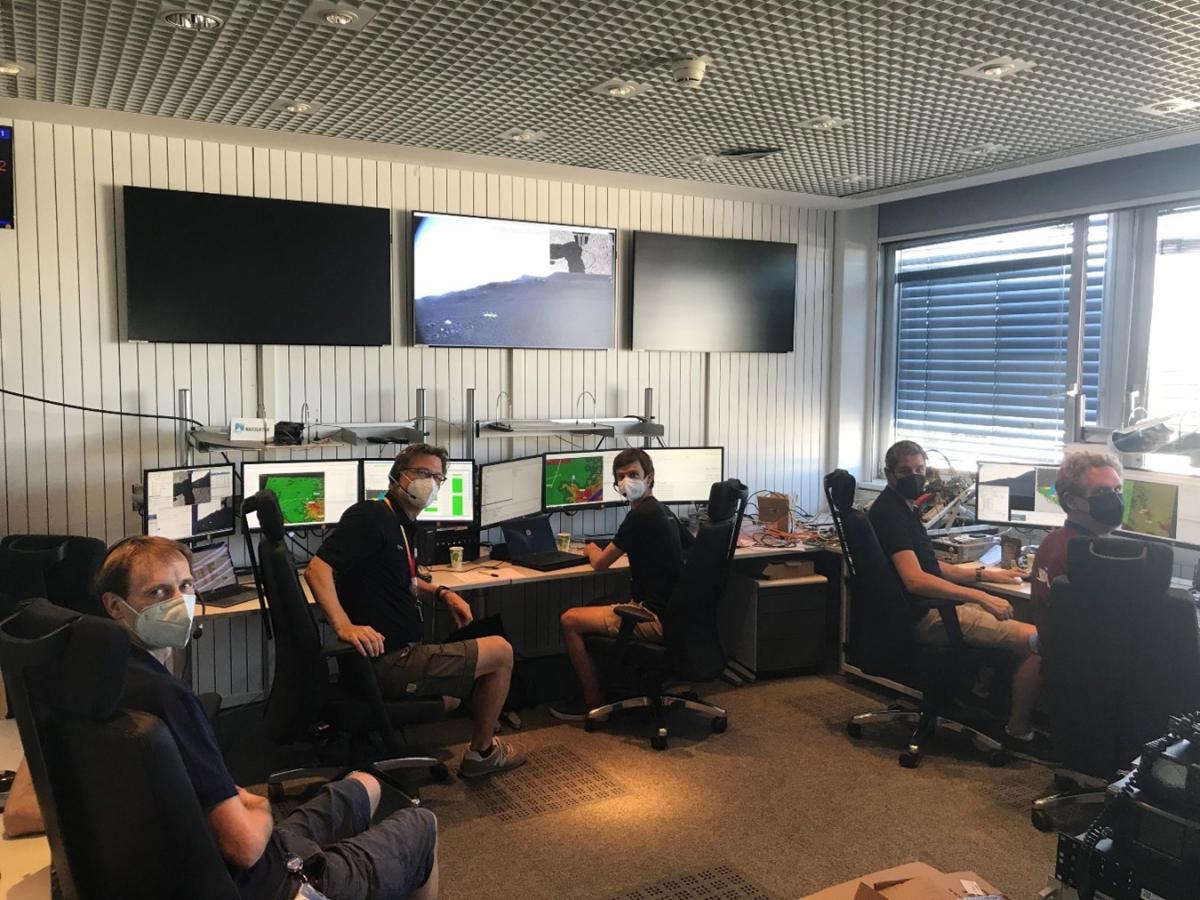
MIRACLES FCT at ESOC during their shift (From left to right: Sebastian Martin, Kim Nergaard, Thomas Demeilers, Paul Steele, Marius Schwinning and Josselin Stark (taking the picture)).
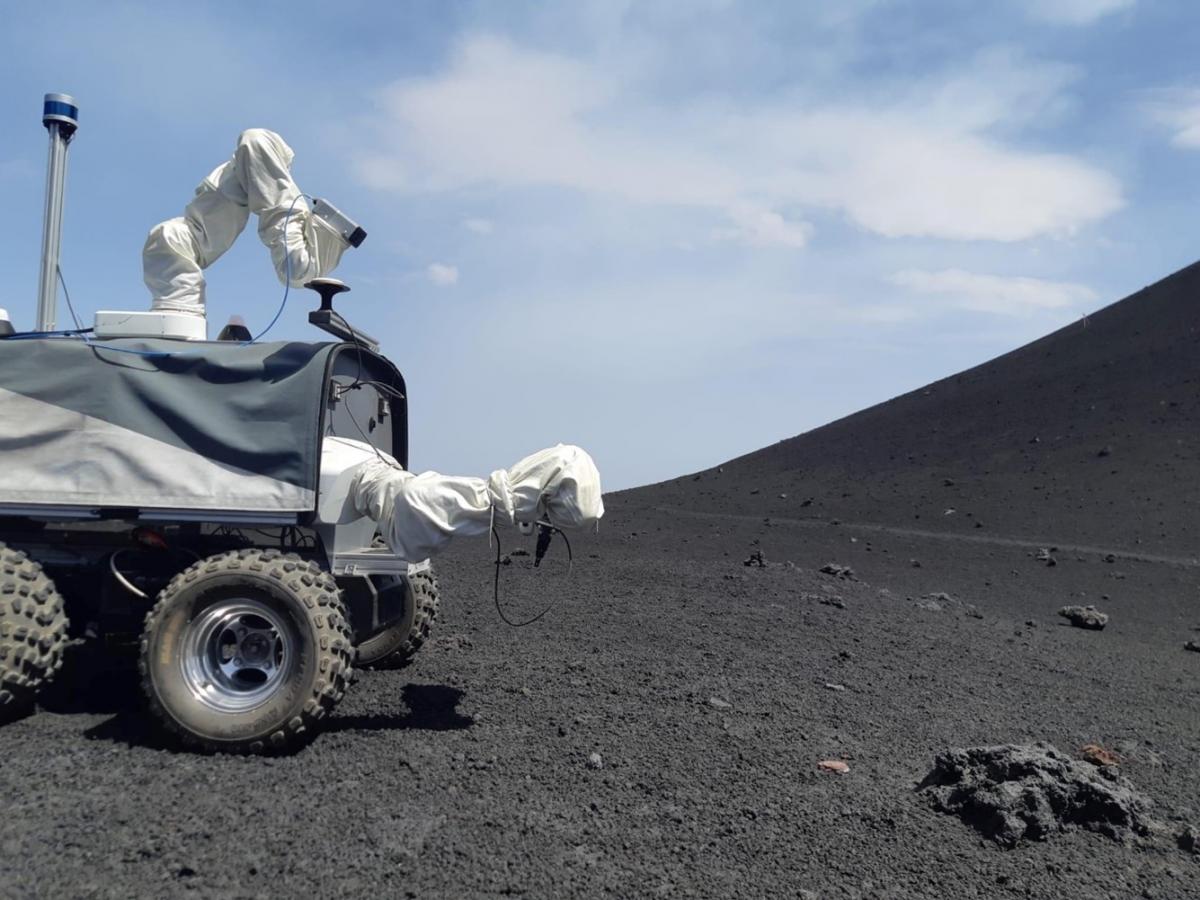
Interact rover about to start sampling operations at one of the science regions of interest.
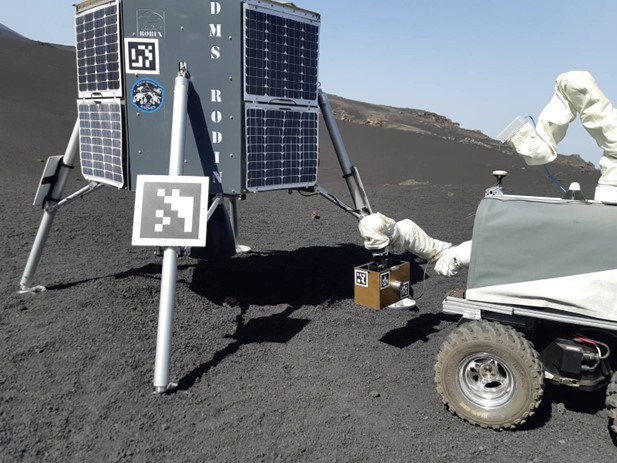
Interact rover returns sample canister back to the lander.
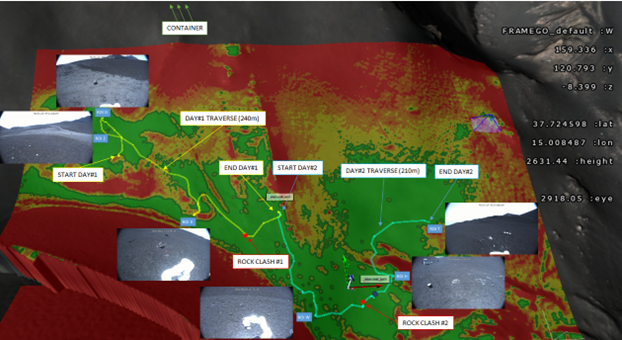
Summary of operations on day #1 and #2.
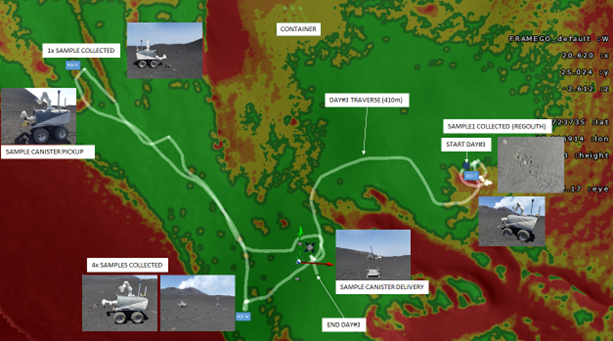
Summary of operations on day #3.
*Images credits: ESA